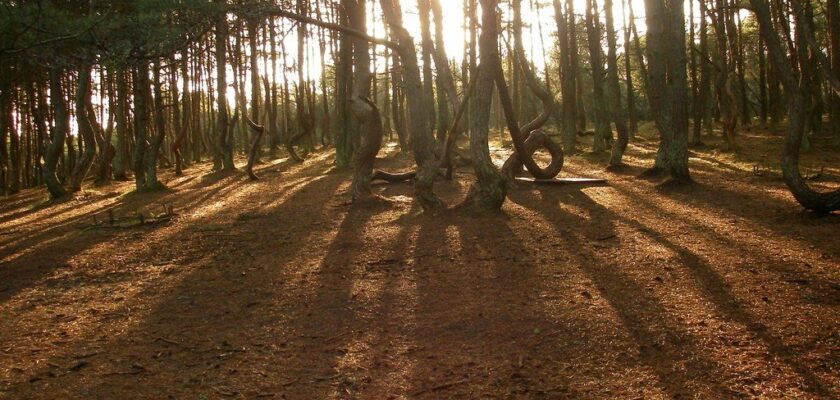Dancing forest on the Curonian Spit
Dancing Forest is a section of pine forest in the Kaliningrad region, named so because the trunks of the trees growing here have a variety of curves and seem to “dance”. Pine trees look like chair backs, harps, rings and human figures. Some trees are curled in spirals and intricate loops, while others “creep” parallel to the ground. Some, especially “outstanding” pines have even received their own names – “devil’s horns”, “witch’s ring” and “devil’s gate.”
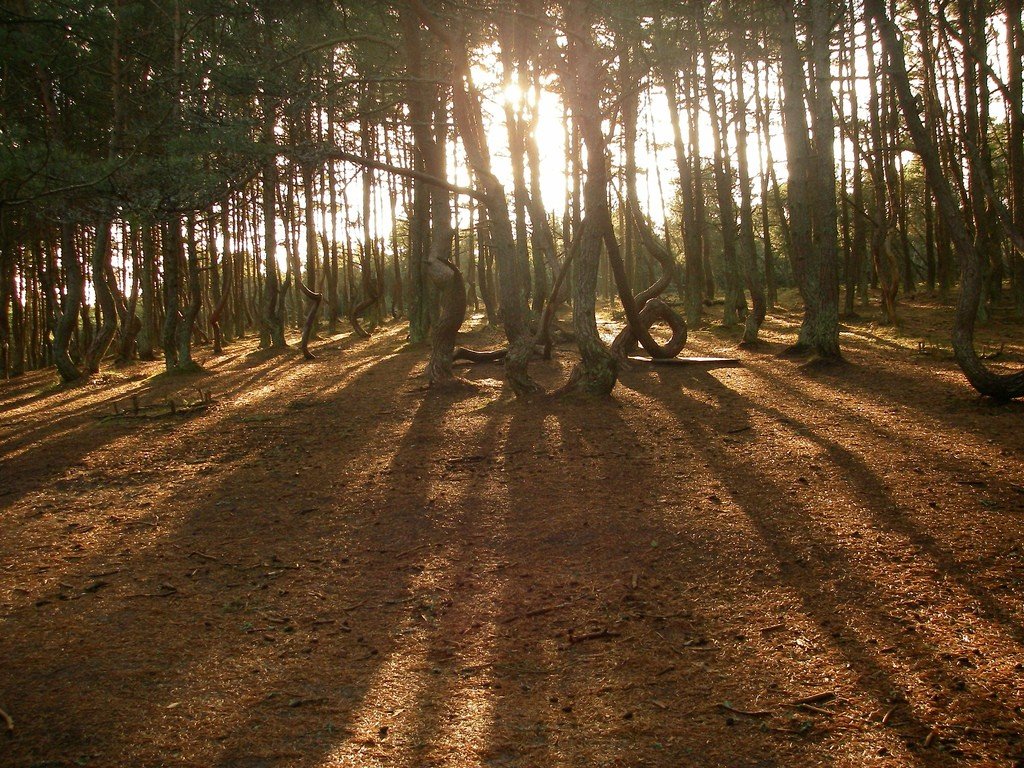
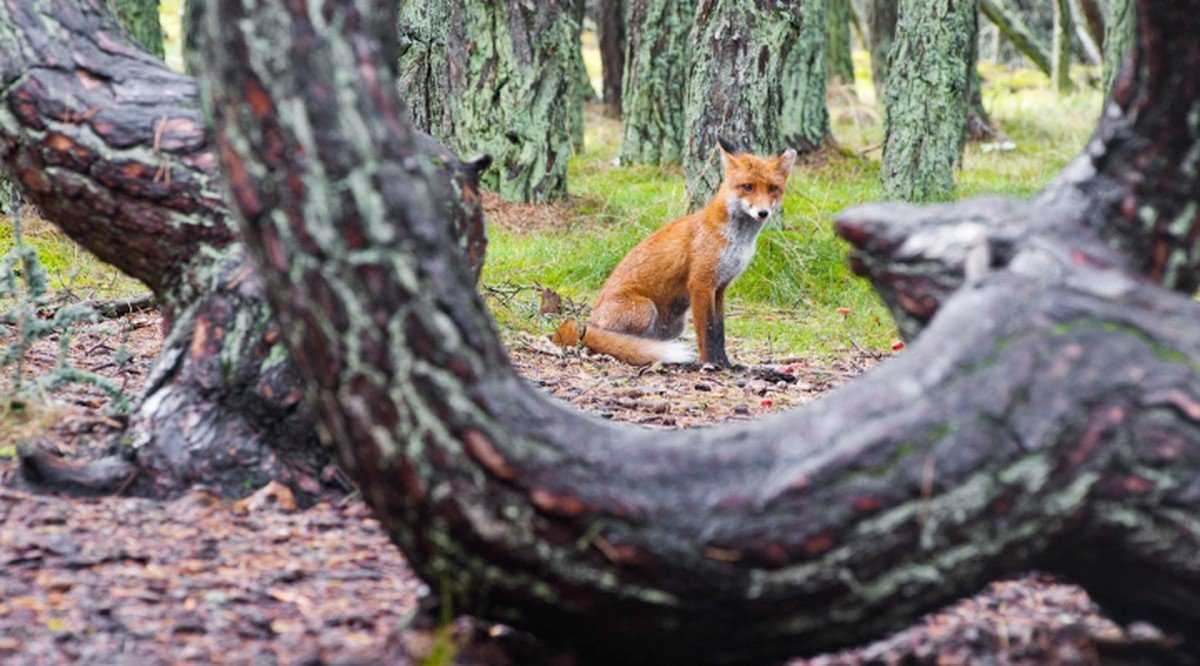
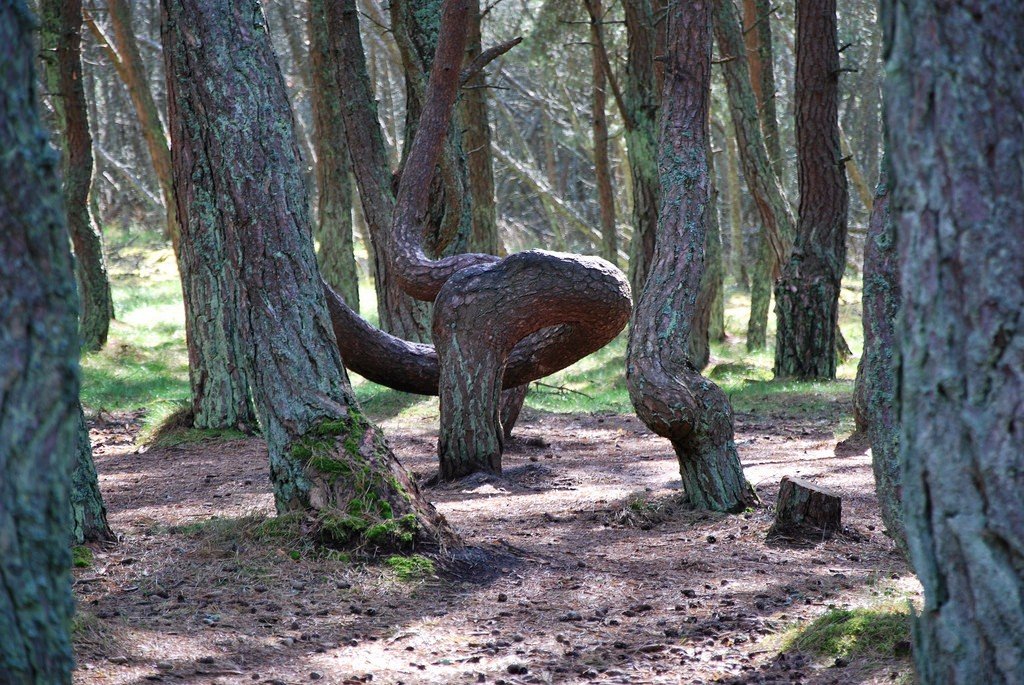
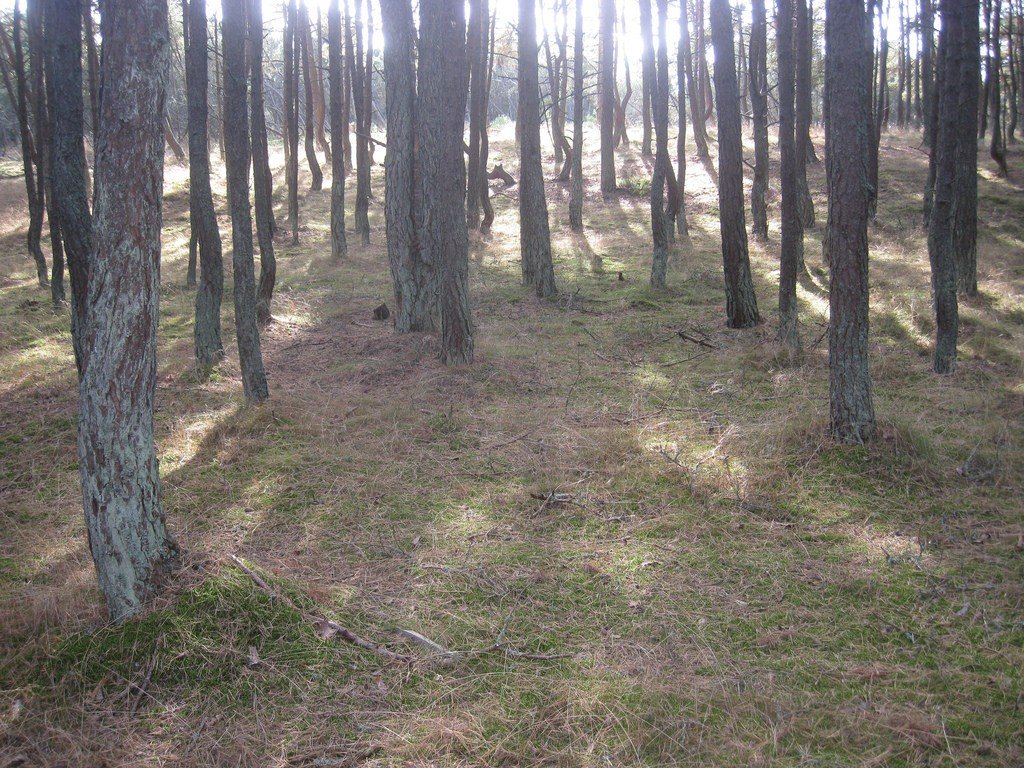
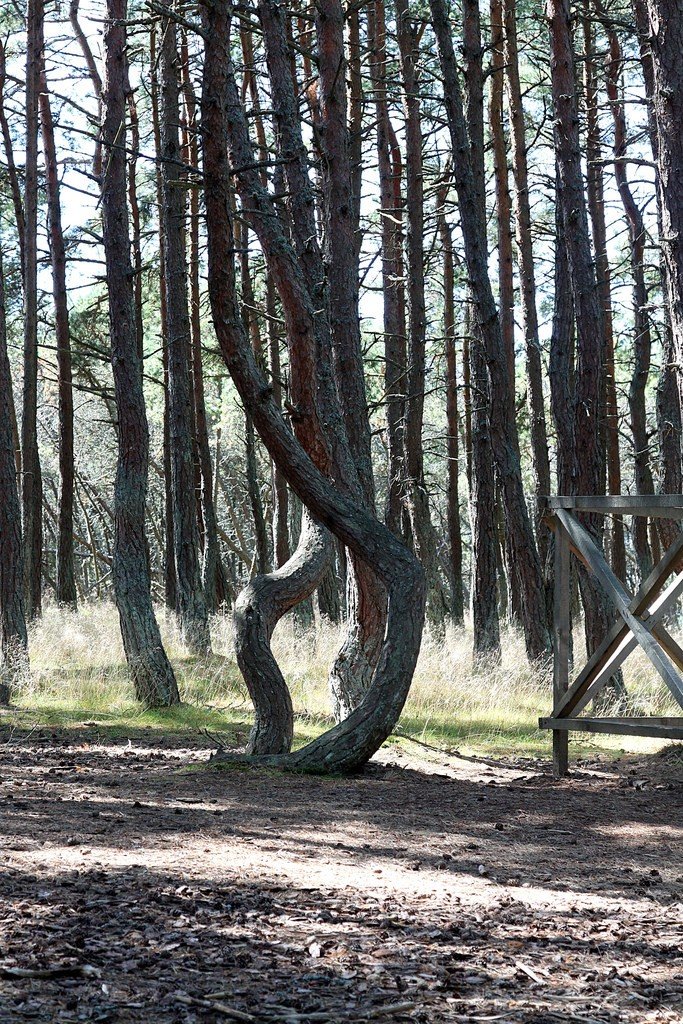
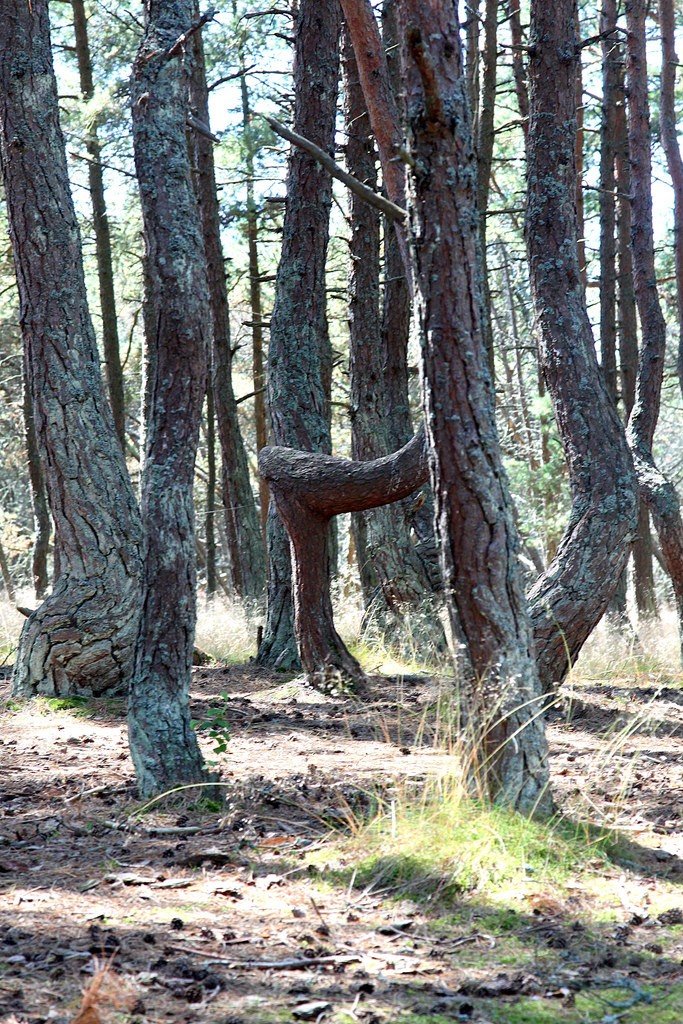
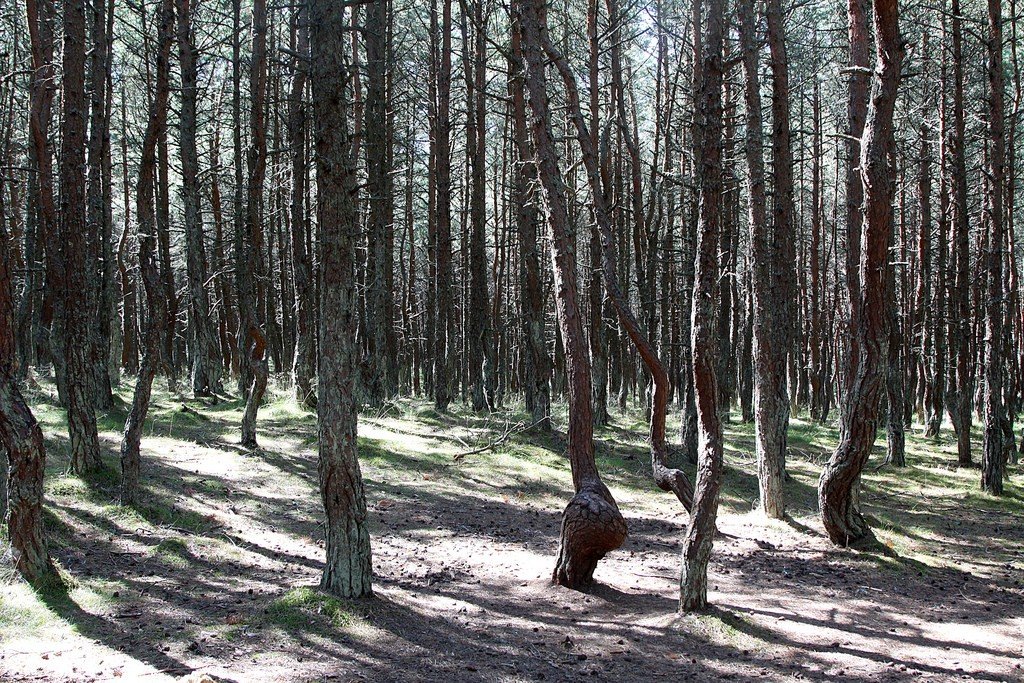
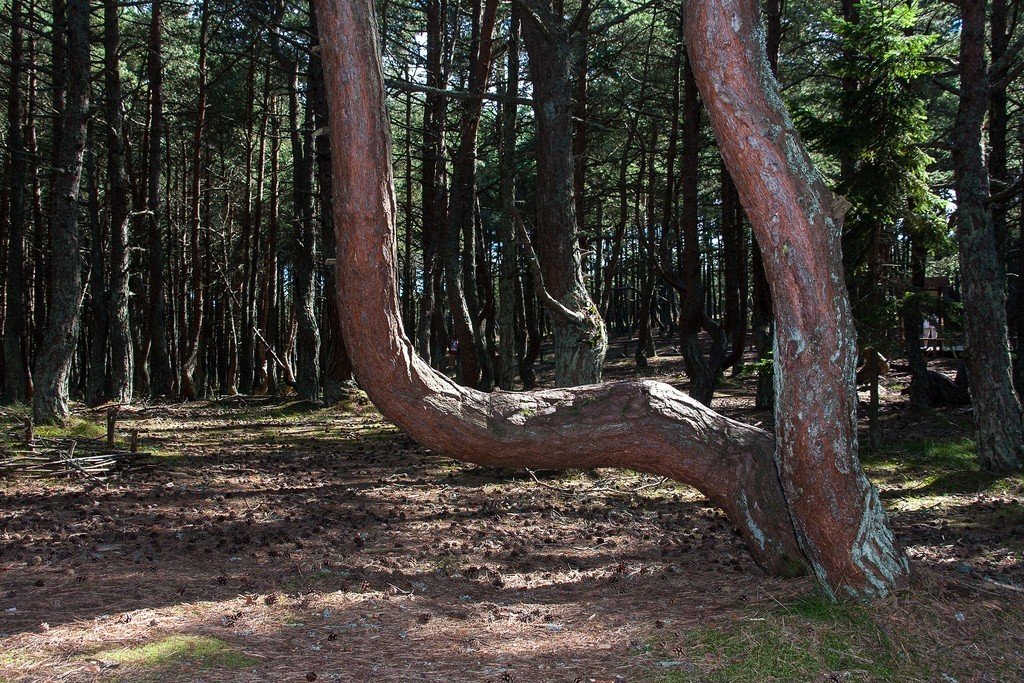
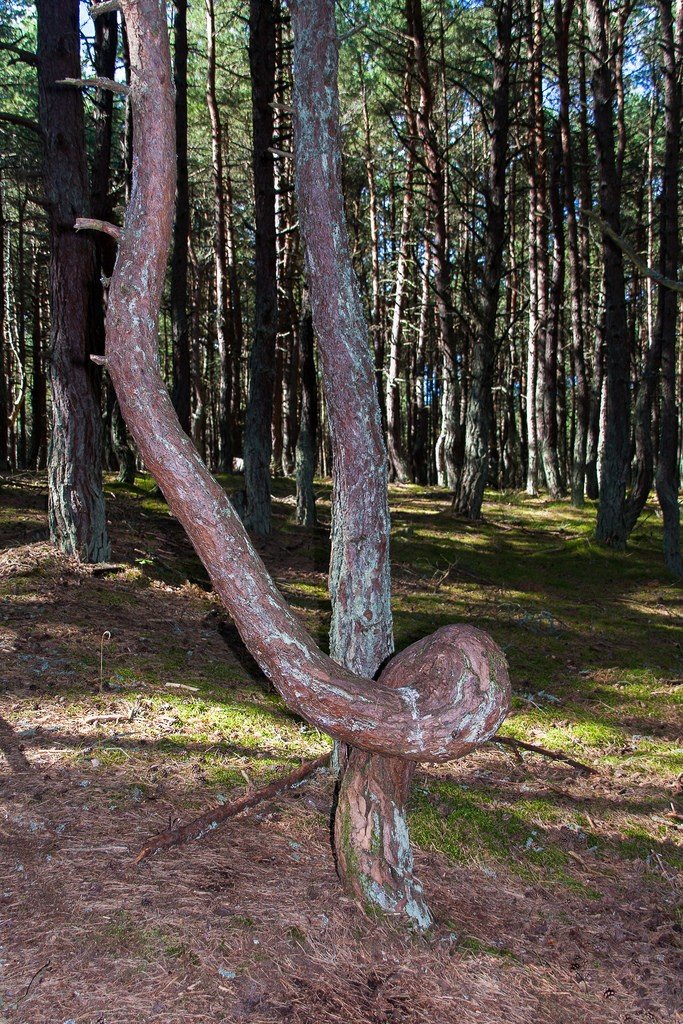
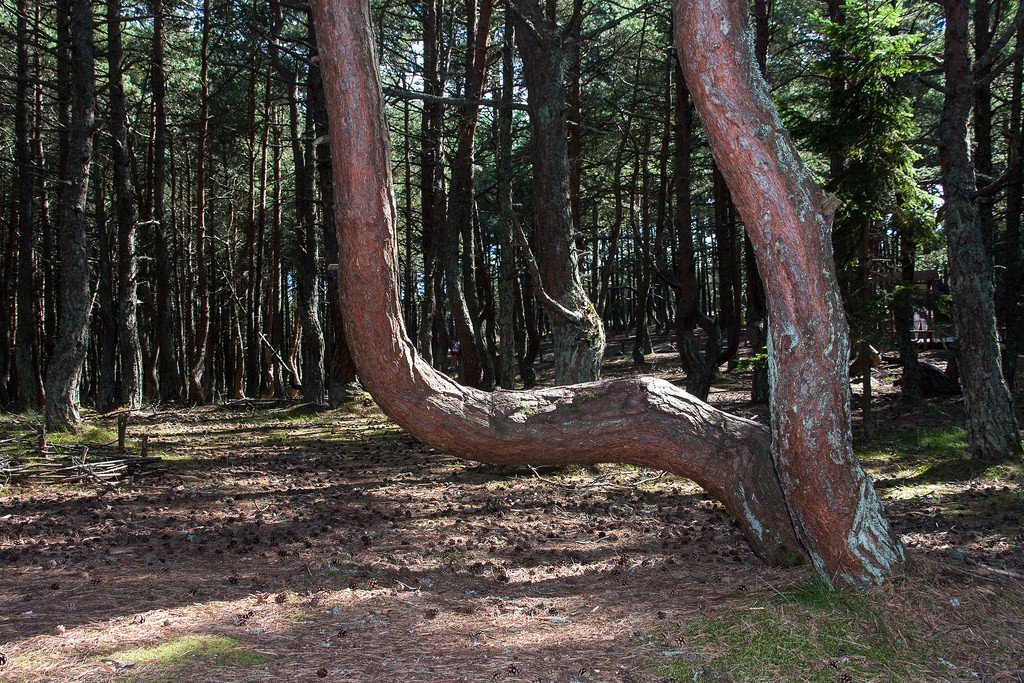
Video: Dancing Forest on the Curonian Spit
” title=”YouTube video player” frameborder=”0″ allow=”accelerometer; autoplay; clipboard-write; encrypted-media; gyroscope; picture-in-picture; web-share” allowfullscreen> Contents- Highlights
- Causes of tree deformation
- Current problems of the dancing forest
- Trail through the dancing forest
- How to get there
Highlights
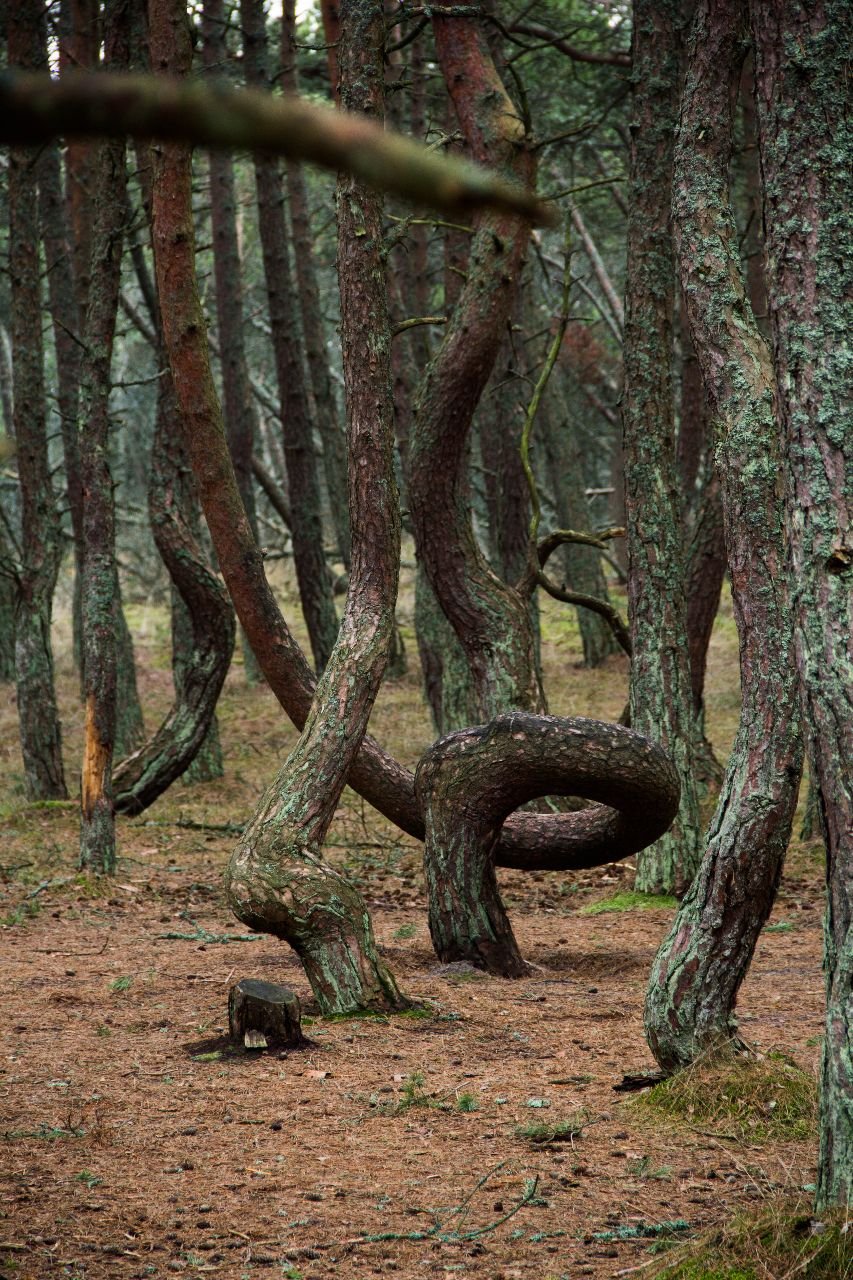
Hard to believe, but the dancing or, as it is also called, “drunken” forest is not a natural anomaly. Trees on the Kruglaya dune, near the village of Rybachiego, were planted in 1961 in order to strengthen the Curonian Spit and prevent erosion characteristic of the area. Most of the dunes of the protected spit stretch along the shore of the Curonian Lagoon. And the Round Dune, where an unusual dancing forest grows, is located between the bay and the Baltic Sea shore on a flat plain. The old name of this place is Runderberg, which means “Round Mountain”. The village of Rybachy used to be called Rossitten.
.Causes of tree deformation
Experts have not reached a consensus on why the trunks of the pine trees of the dancing forest are so warped. There are different points of view on this matter. Among biologists there is a common version that pine shoots at a young age were damaged by caterpillars of the red leafhopper butterfly (Rhyacionia pinicolana). The caterpillars usually eat the apical and partially lateral buds. Even though the apical bud is missing, the tree still has to develop and it starts to grow at the expense of the remaining lateral buds. Because of this, the trunk becomes deformed and takes on a curved shape over the years.
.It is known that the caterpillars of the red leafhopper most often damage young trees between 5 and 20 years old. These pests develop best in pine plantations growing on soils with little groundwater and where the soil is not particularly rich in minerals. Exactly such conditions can be observed on the territory of the Curonian Spit.
.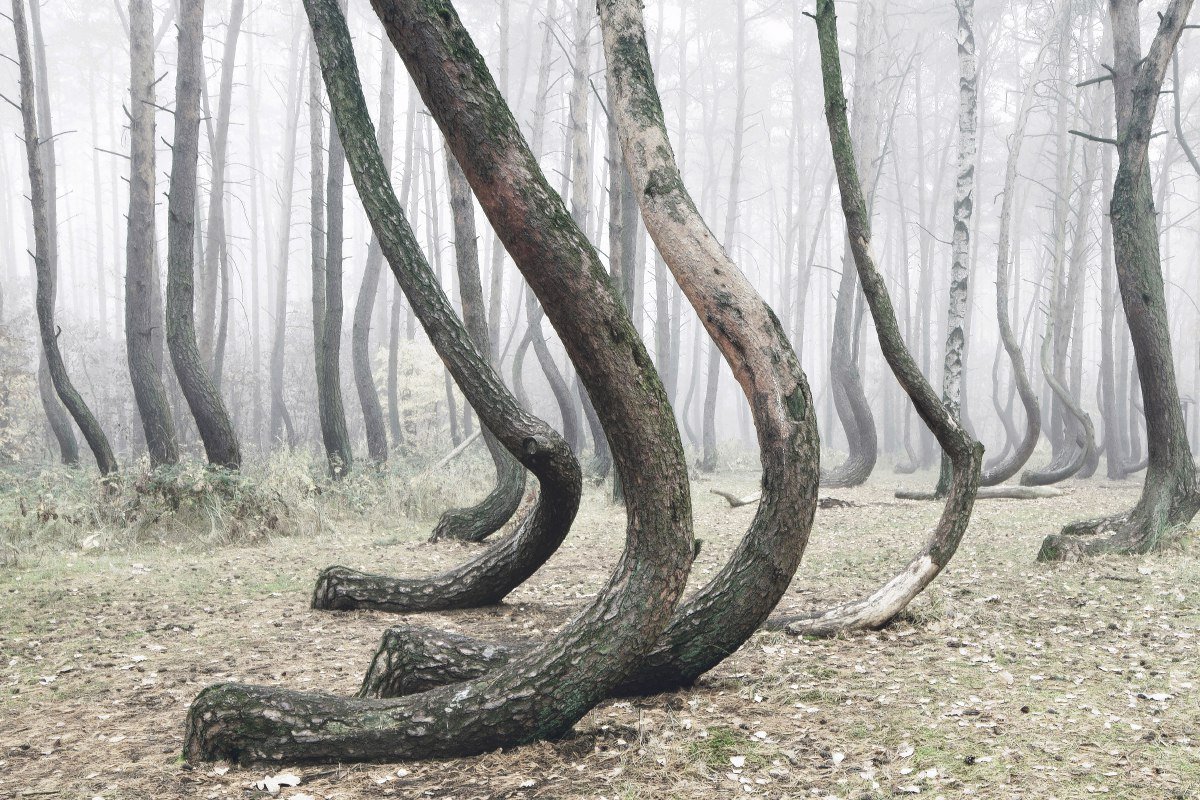
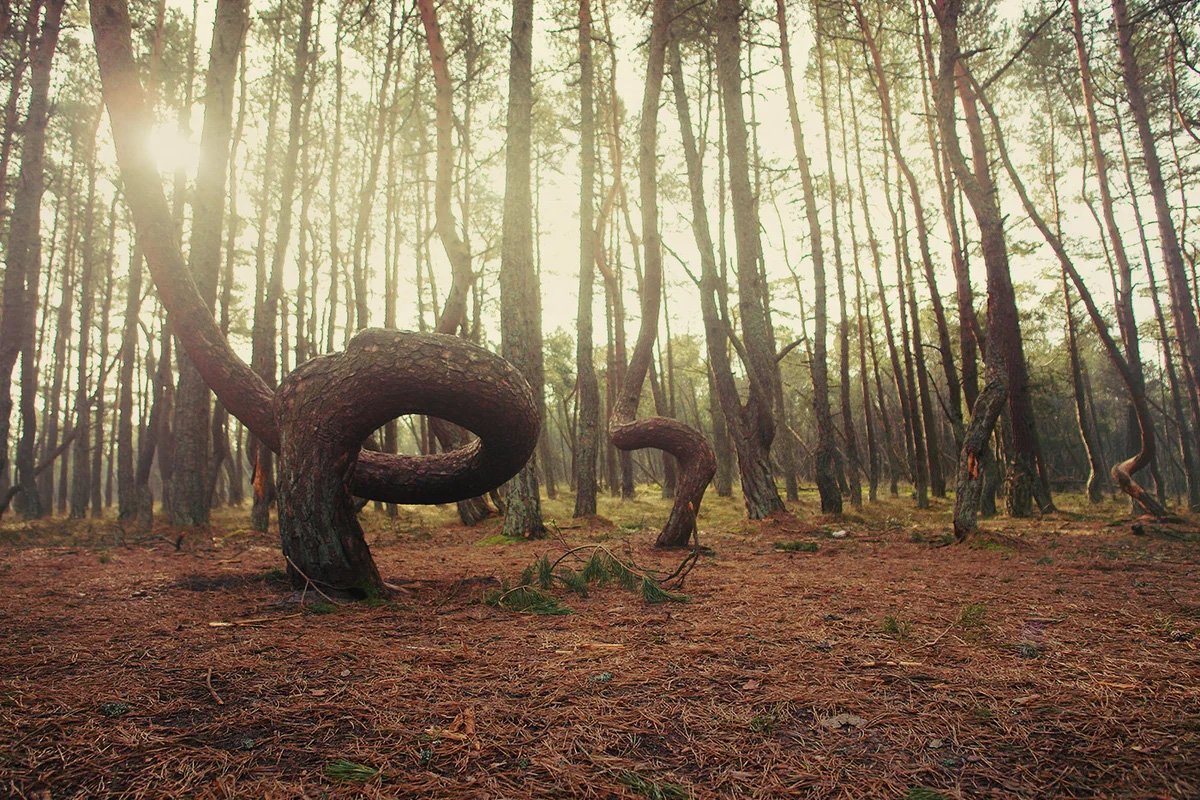
Contemporary problems of the dancing forest
Unusual shapes attract a huge number of tourists to the dancing forest. Although there are warning signs near the natural attraction, most visitors to the Curonian Spit ignore them.
.
Those who like to get spectacular photos climb up the curved trunks, touch the bark and break the lower branches of pine trees. As a result, the unique pine massif is subjected to a colossal anthropogenic impact. Many of the trees have almost all the bark stripped off at the bottom of their trunks. The ground around the trees is so heavily tamped down by people that nothing grows on it. Environmentalists are convinced that if visitors to the national park don’t treat the dancing forest more carefully, it will be gone in a few years.
.Trail through the dancing forest
To date, a special trail has been built through the dancing forest and tourists are asked to walk only on it. The hiking trail is 0.8 kilometers long and is equipped with wooden decks and handrails.
>
At the beginning of the trail you can see the foundations of buildings. On this site there used to be a famous German gliding school. The school was founded in 1922, and 14 years later it was granted Imperial status. Until January 1945, about 30,000 German pilots were trained here, and among them there were many who set records for the duration and length of flights.
.
Moving along the trail, you can walk around the perimeter of the section of the dancing forest. Along the way there are several boards with information about the pine forest and its environmental problems. The most “famous” trees are surrounded by low wooden hedges.
.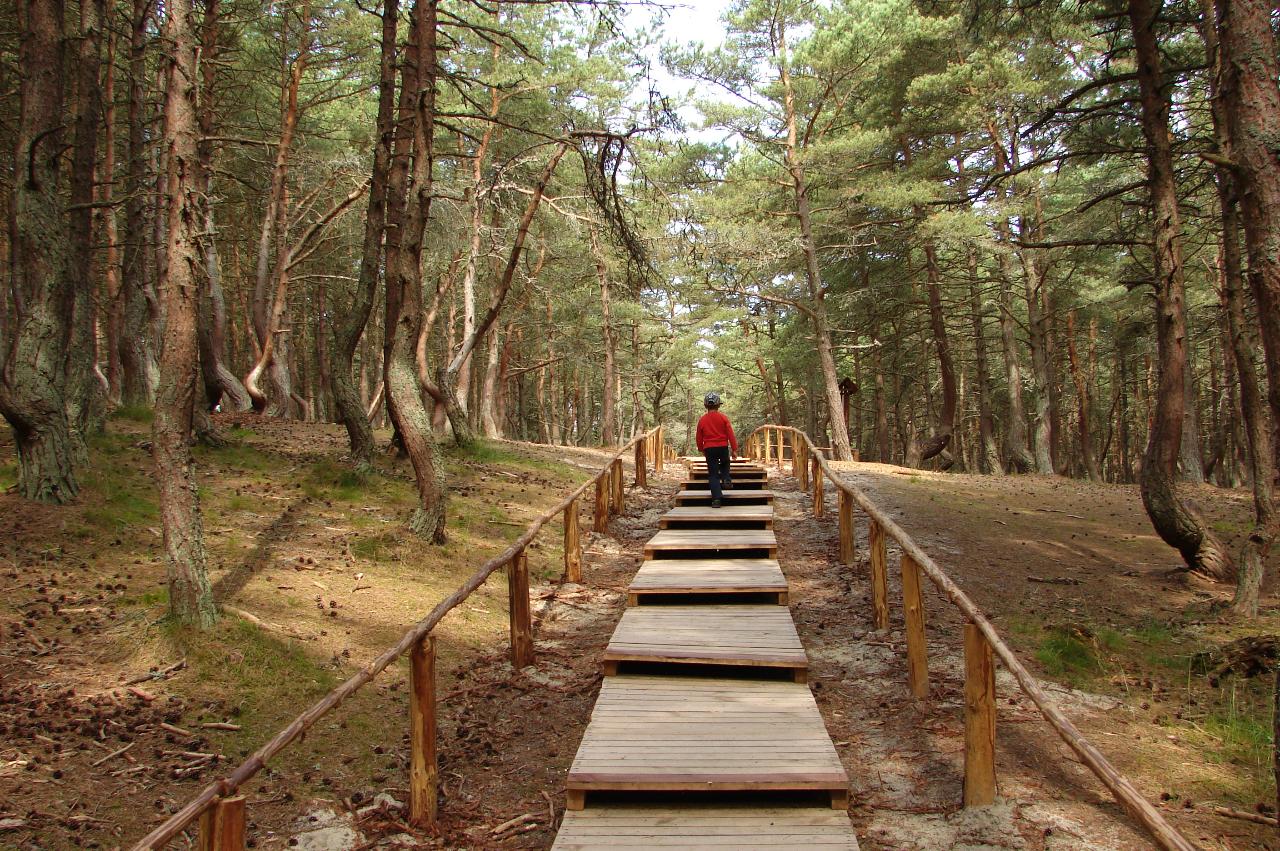
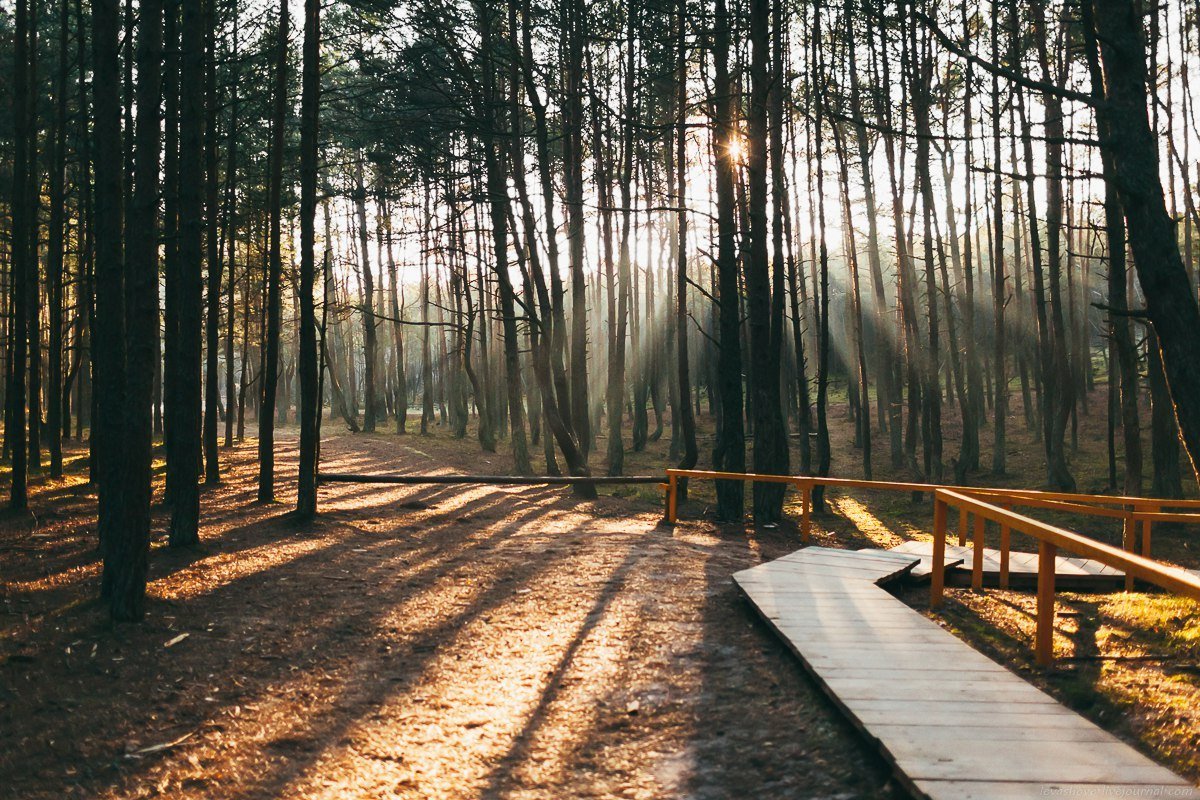
How to get there
The Dancing Forest is located on 37 km of the Curonian Spit, on the territory of the national park. It is located 4 km north of the village of Rybachy, near the road leading towards Lithuania. Closer to the highway, the pine forest is flat, without damage. Warped trunks are located at some distance from the highway.
.From Kaliningrad to the national park “Curonian Spit” can be reached by shuttle buses going to Klaipeda. Tourists usually ask the driver to stop near the dancing forest.
In addition, there is a possibility to get to the Curonian Spit with a transfer in Zelenogradsk. Kaliningrad and Zelenogradsk are connected by suburban electric trains and regular bus service, and from Zelenogradsk to the Curonian Spit want buses and cabs.
.